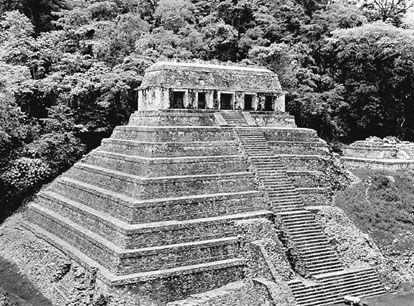

 | Page 974 |  |
beautifully preserved. The Tablet of the Cross, for example, is one of the masterpieces of Maya sculptural art. The central scene shows an episode from the Maya creation epic and is flanked by King Kan-Balam II portrayed on his accession day. The hieroglyphic text that accompanies the scene tells about the Maya creation before presenting a list of the kings of Palenque.

A pyramid in the ruins of Palenque
(Gamma)
See also
References
Schele, L., and P. Mathews. 1998. The Lode of Kings. New York: Scribners.
Paleolithic archaeology was born in the decades between 1840 and 1860 by the interweaving of a number of intellectual threads that gave meaning to the material relics of the distant past. These included the antiquarian tradition (literally, an interest in artifacts manufactured in the past), a long-standing idea of progress and development as a general human characteristic, the establishment of human antiquity, and the idea of evolution (i.e., descent with modification).
Individuals in many societies have, throughout history, expressed an interest in the human past and its visible antiquities, but much of this was philosophical speculation removed from the study of the remains themselves. It was the European Renaissance that provided the foundations for a material study of the past. The classical writers discussed the ancestors of the northern Europeans, which led some renaissance scholars to speculate on the origin of European antiquities (Daniel 1975, 17). Some sixteenth-century scholars were able to travel to greece and italy and see classical antiquities for themselves. During this time, however, the focus was on art and architecture, on visible standing monuments rather than on buried remains.
 |  |